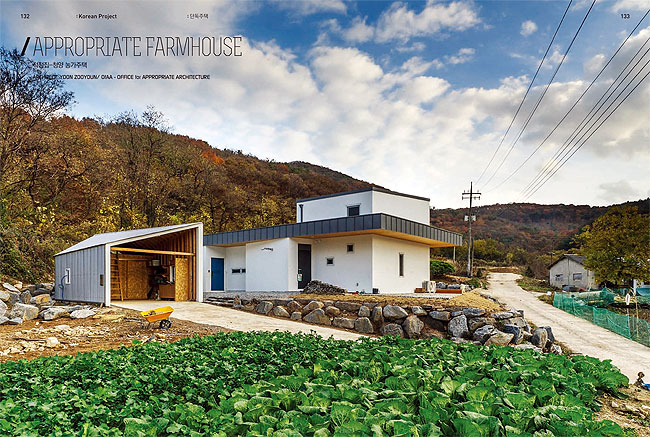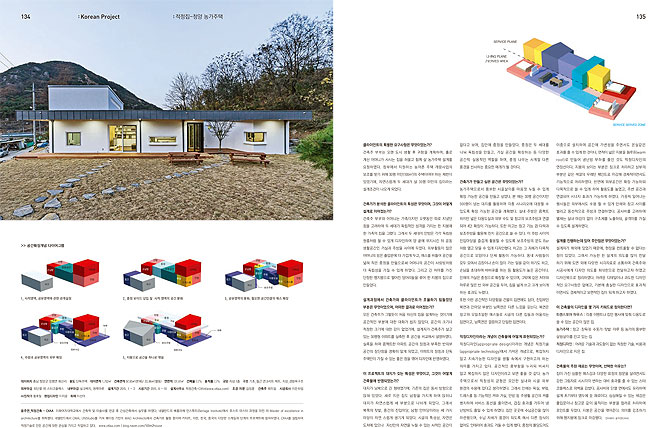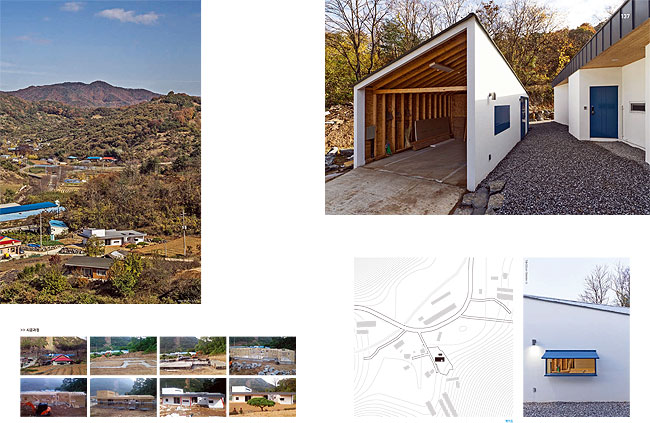


유네스코 세계유산 부지이자 셰익스피어 햄릿의 배경으로 유명한, 인근의 크론보르
성(Kronborg Castle)은 헬싱외르(Elsinore)의 여행객과 지역 주민 모두가 찾는 매력적인
명소로 주목을 받아왔다. 헬싱외르의 옛 조선소는 이제 13,000m2 공간에 공연장과 전시실,
회의실, 기지창 박물관, 공공도서관을 수용하는 문화와 지식의 중심지로 변화했다. <컬처
야드>는 옛 산업도시에서 현대적인 문화의 중심으로 탈바꿈한 헬싱외르의 변신을 상징한다.
이곳은 과거와 현재를 잇는 중심축으로, 지역 공동체의 정체성을 강화하는 동시에, 국제적
태도를 표명하면서 지역 공동체와 세계 공동체의 관계를 강화한다.
과거와 현재의 대비는 <컬처 야드> 전반에 스며있다. 예를 들어 본래의 철근콘크리트 골조를
보강하면서 이 지역의 옛 산업시대가 연상되도록 그대로 노출시켰다. 이러한 역사적 맥락은
설계 과정에서 주요한 구조 개념을 이루었는데, 예리한 관찰자라면 건물의 구석구석에서,
벽체의 표면을 하나 씩 벗겨가면서 역사의 한 장을 발견하게 될 것이다. 이곳은 헬싱외르의
참모습이 어떤 것인지, 과거와 현재의 신비로운 혼합이 어떤 느낌인지 알고 싶은 사람이
방문하기에 알맞은 장소다.
연철 계단과 콘크리트 부재 등의 건축 요소가 현대적인 유리 구조 및 실내 디자인과 상호작용
하면서, 옛날과 오늘날의 대비는 분명해진다. 이런 식으로 <컬처 야드>는 옛 것과 새 것의
긴장을 일으키고, 과거와 현재의 대비, 산업사회와 정보사회의 대비라는 개념이 상존하게
만든다.
특히 해변과 크론보르 성에서 바라볼 때 눈에 들어오는 다면적인 입면은 인상적이다.
파편적이면서도 강하게 응집된 모습을 보여주는 유리와 철골 구조의 거대한 입면은 역사적인
장소성에 도전하면서, 덴마크와 스웨덴을 가르는 해협 너머를 위풍당당하게 바라본다. 그
투명한 입면은 내부와 외부의 관계도 강화하는데, 길에서 그 안을 들여다볼 수 있을 뿐
아니라 건물의 모든 층에서 장대한 바다와 크론보르 성의 모습을 만끽할 수 있다. 건물의 주
출입구 위로 극적이게 돌출한 유리 케이브 안에서 보는 광경은 특히 훌륭하다.
입면은 현란하고 인상적인 선들의 유희로 공간감을 일으키면서, 건물을 독특한 분위기로
에워싼다. 비록 입면이 수백 개의 선과 삼각형들로 이루어졌다 할지라도, 장소와 시간의
감각을 만들어내는 하나의 거대한 입체로 인지된다. 입면은 미적이고 공간적인 건축 요소일
뿐만 아니라, 환경 요건도 고려하여 건물의 냉난방 에너지 수요를 줄이는 기후 방벽의
기능도 한다.
글: 오르트 아키텍츠
In many years the attention has been aimed at the site adjacent, where the UNESCO World
Heritage site, Kronborg Castle, which is famous for its role in Shakespeare’s Hamlet,
exerts its magnetic pull on both tourists and local citizens of Elsinore ? but now Elsinore’s
old shipbuilding yard has been transformed into a 13,000m2 cultural and knowledge
centre, including concert halls, show rooms, conference rooms, a dockyard museum and
a public library. symbolizes Elsinore’s transformation from an old
industrial town to a modern cultural hub. In this way, the yard is designed as a hinge
between the past and present, reinforcing the identity of the local community, but at the
same time expressing an international attitude, reinforcing the relation between the local
and global community.
The contrast between past and present permeates . For instance,
the original concrete skeleton with armoured steel has been reinforced, but left exposed
as a reference to the area’s industrial past. The historic context has thus been the main
structural idea in the design process, ensuring the keen observer will discover a chapter
of history in every corner of the yard and every peeling of the wall. In other words, if you
want to understand what Elsinore really is, what the intangible blur between past and
present feels like, this is the place to visit.
Thanks to architectural features such as wrought iron stairs and concrete elements,
interacting with modern glass structures and interior designs, the contrast between the
days of yore and the present becomes evident. It is ’s way of playing
with the field of tension between old and new, making the notion of past versus present,
the industrial society versus the information society, constantly present.
Particularly striking, when viewed from the seafront and Kronborg Castle, is the
multifaceted facade. Like a fragmented, yet strongly coherent structure, the enormous
glass and steel facade challenges the historic site and stares unflinchingly across the
Sound ? the strait that separates Denmark and Sweden. The transparent facade also
reinforces the relation between inside and outside, as you can peek in from street level
and enjoy the magnificent sea view and view of Kronborg Castle from every floor of the
building, especially from the glass cave which in a dramatic gesture protrudes out of the
building above the main entrance.
In this way, the facade encloses the yard in a distinctive atmosphere, as the dazzling and
dramatic play of lines generates a sense of spaciousness. Although the facade is made of
hundreds of lines and triangles it appears as one big volume, generating a sense of place
and time. The volume also takes the environment into account, since the facade not only
functions as an aesthetic and spatial architectural feature, but also as a climate shield,
reducing the energy demand for cooling and heating of the building
Written by AART architects
 |


